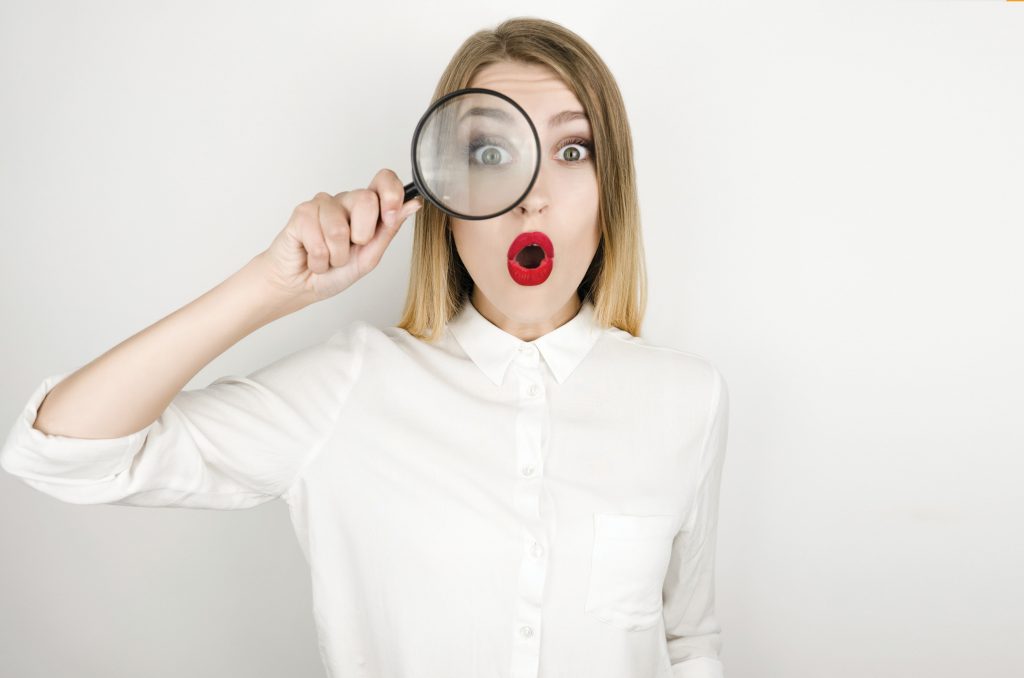National Eye Exam Month is an ideal time to think about the importance of healthy eyes and vision, but keeping it in mind throughout the year is an even better idea. Whether you are 8 or 80, being proactive about caring for your eyes can mean better health and sharper sight well into the future. SLUCare ophthalmologist and Saint Louis University School of Medicine professor Dr. Gabriela Espinoza says proper eye care means not just making sure you can see clearly, but also reducing the likelihood of eye health problems. Regular exams are the foundation of this effort, allowing doctors to pick up on certain conditions before they become serious, she notes. Everyone’s eye health needs are different, and some people need more frequent care, but here are some general recommendations about when to have your eyes checked.
children
“Eye health and vision screenings for kids under age 5 are needed because the child usually can’t tell parents if there is a problem,” Espinoza says. “When children are older, if there are any vision or eye health issues, parents should consult a doctor.”
adolescents/young adults
“As you approach age 20, it’s a good idea to see an eye doctor for a comprehensive exam,” she notes. “Looking at the eyes may reveal early signs of health problems like diabetes or high blood pressure, or vision issues, including the need for glasses.” It’s also possible for eye diseases like glaucoma to show up at a relatively early age.
30s and 40s
Again, Espinoza recommends eye exams as you enter your 30s and 40s to check your vision and look for early signs of disease. “Everyone should get an exam at age 40,” she says. “Many patients note that a parent or grandparent had poor vision or blindness, so family history is extremely important to review as well.”
60 and up
“If you have made it to your 60s with nothing more than reading glasses, you’re probably doing well, but signs of conditions like cataracts may start appearing in this age group or earlier,” Espinoza says. “If you develop cataracts, they will advance with age, and you may not be able to do things like pass a driving test. Age-related macular degeneration, which causes central vision impairment, also becomes more prevalent at this time.”
advice for everyone
Espinoza says that at every age, vigilance, communication and regular eye care can help uncover problems before they escalate. “Be proactive about your vision, eye health and safety, and don’t be afraid to speak up if you notice changes or problems,” she advises. “We know that 95% of eye injuries can be prevented by wearing protective glasses, for example. If you spend time in a workshop using machinery and materials that could fly into your eyes, like wood or metal, be sure to wear protection. Even mowing your yard, using a weed trimmer and setting off fireworks can be dangerous to the eyes, so use glasses that fully protect the area around them.”
She says good quality sunglasses can be helpful as well. “They may be able to help protect against the progression of cataracts and macular degeneration by preventing excess sun exposure,” she explains.
Anytime you experience an eye injury or notice a change in your vision such as difficulty reading, driving at night or seeing at a distance, or if you find that glare from sunlight blurs your vision, it’s important to be seen by a doctor. You also should have regular eye exams if you are diabetic or have hypertension, Espinoza says.
“These are all good reasons to come in to the office without delay,” she advises. “The earlier we detect an eye or vision problem, the easier it may be to treat.”
What are the two types of age-related macular degeneration (AMD)?
AMD occurs in the eye when a part of the retina called the macula becomes damaged. The condition erodes your central vision and makes it difficult to discern fine details up close and far away. AMD is the most common cause of vision loss in people age 50 and older.
‘Wet’ AMD is the more serious of the two kinds and involves the formation of abnormal blood vessels under the retina. They can leak blood and fluid, causing the macula to become scarred.
‘Dry’ AMD is more common, occurring in 80% of AMD patients. It involves thinning of parts of the macula and the growth of tiny protein clumps called drusen. People with dry AMD lose vision more gradually than those with wet.
What is glaucoma?
Glaucoma is a disease that affects the eye’s optic nerve, which is made up of more than a million tiny nerve fibers. Fluid builds up in the front part of the eye, which increases pressure, causes the nerve fibers to die and results in blind spots in your vision. If all of the nerve fibers die, you become blind. The condition is a leading cause of blindness in people over age 60, but it often can be prevented with early detection and treatment.
What are cataracts?
A cataract is a condition in which the eye’s lens becomes cloudy. Proteins in the lens break down and cause blurry, hazy vision and a decreased ability to detect color. People with cataracts also may experience double vision, light sensitivity, difficulty reading and problems seeing at night, and bright colors may appear faded or yellowish. Aging is the most common cause, but smoking, past eye injury or surgery, diabetes, excessive sun exposure, some medications like corticosteroids, and a family history of cataracts may contribute to the condition.
Source: American Academy of Ophthalmology
